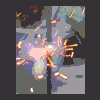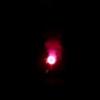how to make conic fountains?
#1
 Guest_PyroPDC_*
Guest_PyroPDC_*
Posted 19 October 2009 - 11:17 PM
can any share any light on this (maybe some pics if possiable ?)
#2

Posted 20 October 2009 - 12:15 AM
#3

Posted 20 October 2009 - 08:03 AM
#4

Posted 20 October 2009 - 08:21 AM
The hardest part I find is making a respectable looking case of any thickness...
 thegreenman
thegreenman
#5

Posted 20 October 2009 - 08:55 AM
Some of the really big cones have the last increment punched to ensure compression. I have literally seen the knuckle marks in the comp. Very odd but seems to work.
You cane use standard type round (not conical) rammers of ever increasing size, but you need to work out the increments very carefully and also put the inverted case in a conical mould to stop it being distorted. Probably the easiest way to do that is make a former for the case, so your cases are all the same size and then cover one in cling film and cast a mould around it from resin, reinforced plaster (Chopped fibreglass may help to hold the plaster together) or some other castable liquid.
#6

Posted 20 October 2009 - 09:52 AM
The case needs to be REALLY strong as the pressure increases a great deal as the composition burns down, owing to the ever increasing surface area.
Very true, some of my early efforts blew themselves off their bases when the pressure got too high...
I've made the cases using segements of card, but hard to get a neat result. I've been considering if I could press the cases out of papier mache sludge using a two part mould, but not really had a go at that yet.
 thegreenman
thegreenman
#7

Posted 20 October 2009 - 10:15 AM
#8

Posted 20 October 2009 - 02:34 PM
#9
 Guest_PyroPDC_*
Guest_PyroPDC_*
Posted 20 October 2009 - 05:12 PM
also would a stranded fountain mix work or would a slower composition be needed. Any recommendations ?.
#10

Posted 20 October 2009 - 07:17 PM
This may help though haven't tried this myself My linkinteresting, i assume the Chinese have a cone making machine to make it easy .also would a stranded fountain mix work or would a slower composition be needed. Any recommendations ?.
#11

Posted 20 October 2009 - 07:26 PM
Potassium Nitrate 24
Sulphur 4
Charcoal 4
Steel filings 10
(no, it does not add up to 100)
Very tolerant of case size shape etc, but a good fierce composition...
 thegreenman
thegreenman
#12

Posted 22 October 2009 - 06:30 PM
Do the contents (composition) of a cone fountain have to be pressed upside down before attaching the circle card at the bottom of the cone?
In my opinion, to make a effective cone at home should be easy but labour intensive,.........CCH concepts has exactly the right idea,.......just cut out the shape of cone on card in one piece (copy from a piece of paper first to get exact size/shape needed), then use a paper staple gun to hold in place, then make another one the same and place one inside the other so that the join overlaps & glue/trim, fit a smaller circle piece of card with cut edges (lip) upturned inside the bottom of cone (preglued edges making sure it is tacky/almost dry), access cone from other end with rubber tip pencil to press down wall edge/lip inside cone , then fill with sawdust & glue to create a thich layer (you could try and use flame retardent coating on inside to experiment).
Im sure there are other easier ways to make them,....I think there is plastic you can buy in beads that can be shaped when heated, then set into shape you want (via mould perhaps),...maybe this could be reused if a flame retardent inside coating can be found.
Edited by crystal palace fireworks, 22 October 2009 - 07:08 PM.
#13

Posted 23 October 2009 - 08:18 AM
Try it with a circle of paper and it more or less works, try it with a circle of card and it soon gets messy.
 thegreenman
thegreenman
#14

Posted 23 October 2009 - 01:44 PM
The problem is, that as you assemble the cone and it becomes thicker ( and it needs to be really thick) the segment of the cone is no longer the correct shape. Hence the bottom edge will ride up, leaving many stepped edges, which need to be trimmed.
Try it with a circle of paper and it more or less works, try it with a circle of card and it soon gets messy.
Im not sure I fully understand some of the problem of construction phil (I guess its a bit difficult to explain in words without seeing them in pics or making them myself as yet),...would like to see a made or part-made cone (to dissect) at perhaps our next AGM to see if it can be overcome.
How thick are we talking? 6mm walls & base?.
Did email one spiral & convoluted cardboard tube making company near me on how they make them,..there reply was, I quote;-
"Hand Rolled in some cases or made in china, they used to made in the UK but this was decimated many years ago"
(I guess that co-incides with our uk firework making industry).
Im sure someone in the paper/packaging industry will give us an insight, still, will try and see if I can get some answers in due course!
#15

Posted 23 October 2009 - 07:12 PM
Only time i ever saw a cone being made, was from plaster of paris - and it was made from soaked bandages, placed into a negative mould, filled with sand, and compressed, only 100ish kilo's, but enough to force the sand into pressing a cone.
seems a bit of a long way to go to make a cone though, i doubt pressing a cone would be commercially viable.
1 user(s) are reading this topic
0 members, 1 guests, 0 anonymous users















